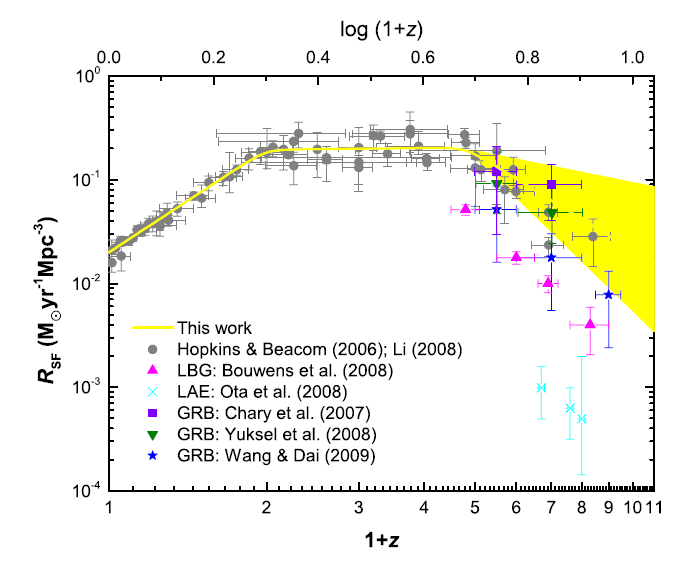At present, direct star formation rate (SFR) measurements are quite challenging at high redshifts, particularly towards the faint end of the galaxy luminosity function. The collapsar model suggests that the cosmic long gamma-ray burst (LGRBs) rate should in principle trace the SFR. However, observations seem to indicate that the rate of LGRBs does not strictly follow the SFR, but instead increases with cosmic redshift faster than the SFR, especially at high-z. Of course, if we knew the mechanism responsible for the difference between the GRB rate and the SFR, we could constrain the high-z SFR very accurately using the GRB data alone. The question of how the GRB redshift distribution is related to the star formation history (SFH) is clearly still not completely understood, but there is an additional important ingredient that has hitherto been ignored in this ongoing discussion – the impact on this relationship from the assumed cosmological expansion itself. We have used attempts at reconciling the Swift LGRBs with the SFH to compare the predictions of LCDM with those in the R_h = ct Universe. First of all, we have confirmed that the latest Swift sample of GRBs reveals an increasing evolution in the GRB rate relative to the SFR at high redshifts. The observed discrepancy between the GRB rate and the SFR may be eliminated by assuming a modest evolution parametrized as (1 + z)^0.8 – perhaps indicating a cosmic evolution in metallicity. However, we have found a higher metallicity cut of Z = 0.52 Z_ sun than was seen in previous studies, which suggested that LGRBs occur preferentially in metal-poor environments, i.e. Z ∼ 0.1–0.3 Z_sun. We have used a simple power-law approximation to the high-z (>3.8) SFH, i.e. R_SF ∝ [(1 + z)/4.8]^α, to examine how the high-z SFR may be impacted by a possible abundance evolution in the Swift GRB sample. For an expansion history consistent with LCDM, we have found that the Swift redshift and luminosity distributions can be reproduced with reasonable accuracy if α = −2.41+1.87−2.09. The high-z SFHs constrained by the Swift GRB data is marked with a shaded band in Fig. 1, in comparison with the available data. For the R_h = ct Universe, the GRB rate is slightly different from that in LCDM but also requires an extra evolutionary effect, with a metallicity cut of Z = 0.44 Z_sun. Assuming that the SFR and GRB rate are related via an evolving metallicity, we have found that the GRB data constrain the slope of the high-z SFR in R_h = ct to be α = −3.60+2.45−2.45. Both cosmologies fit the GRB/SFR data rather well. However, in a one-on-one comparison using the Akaike information criterion, the best-fitting R_h = ct model is statistically preferred over the best-fitting LCDM model with a relative probability of ∼70 % versus ∼30 %. 
By with WEI Jnujie Figure 1. The cosmic SFR as a function of redshift. The high-z SFR (shaded band) is constrained by the Swift GRB data, and is characterized by a power-law index −5.07 < α < −1.05. Some observationally determined SFRs are also shown for comparison. The work by Jun-Jie Wei, Xue-Feng Wu, Fulvio Melia, Da-Ming Wei, & Long-Long Feng has been published in MNRAS, Oxford University Press. Please see the link for more details (http://mnras.oxfordjournals.org/lookup/doi/10.1093/mnras/stu166). |
